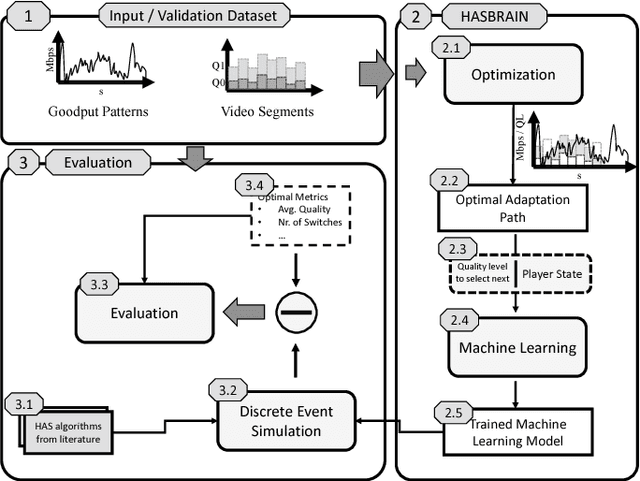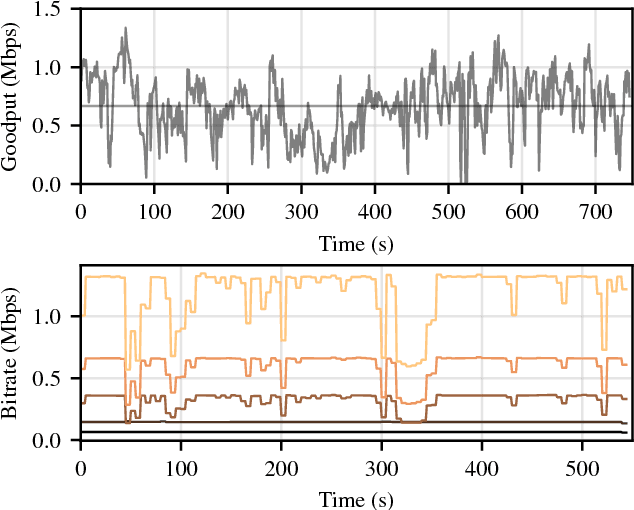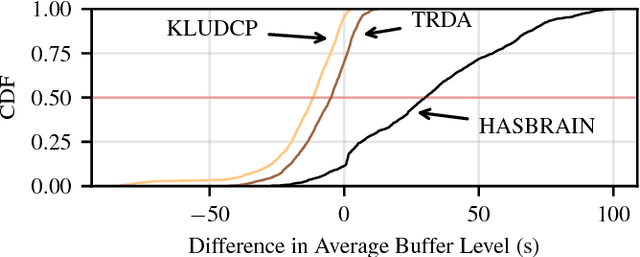Christian Sieber
Towards Machine Learning-Based Optimal HAS
Aug 24, 2018



Abstract:Mobile video consumption is increasing and sophisticated video quality adaptation strategies are required to deal with mobile throughput fluctuations. These adaptation strategies have to keep the switching frequency low, the average quality high and prevent stalling occurrences to ensure customer satisfaction. This paper proposes a novel methodology for the design of machine learning-based adaptation logics named HASBRAIN. Furthermore, the performance of a trained neural network against two algorithms from the literature is evaluated. We first use a modified existing optimization formulation to calculate optimal adaptation paths with a minimum number of quality switches for a wide range of videos and for challenging mobile throughput patterns. Afterwards we use the resulting optimal adaptation paths to train and compare different machine learning models. The evaluation shows that an artificial neural network-based model can reach a high average quality with a low number of switches in the mobile scenario. The proposed methodology is general enough to be extended for further designs of machine learning-based algorithms and the provided model can be deployed in on-demand streaming scenarios or be further refined using reward-based mechanisms such as reinforcement learning. All tools, models and datasets created during the work are provided as open-source software.
 Add to Chrome
Add to Chrome Add to Firefox
Add to Firefox Add to Edge
Add to Edge